I've created a 2d array of 1024 x 1024 values ranging from -1 to 1, but I do not know how I am supposed to change this to a greyscale image.
What I have been doing is assigning a certain color to certain values, but this is not what I was going for.
What I have:

Specific ranges of values between -1 and 1 are mapped to distinct colors in a noncontinuous way (see the code snippet below)
What I want:

Values between -1 and 1 are mapped to greyscale varying uniformly from black at -1 to white at 1 or vice-versa
Code for the current version
private void button1_Click(object sender, EventArgs e)
{
sw.Start();
LibNoise.Perlin perlinMap = new LibNoise.Perlin();
perlinMap.Lacunarity = lacunarity + 0.01d;
perlinMap.NoiseQuality = LibNoise.NoiseQuality.High;
perlinMap.OctaveCount = octaveCount;
perlinMap.Persistence = persistence;
perlinMap.Frequency = frequency;
perlinMap.Seed = 1024;
if (radioButton1.Checked)
perlinMap.NoiseQuality = LibNoise.NoiseQuality.Low;
else if (radioButton2.Checked)
perlinMap.NoiseQuality = LibNoise.NoiseQuality.Standard;
else if (radioButton3.Checked)
perlinMap.NoiseQuality = LibNoise.NoiseQuality.High;
double sample = trackBar6.Value * 10;
double[,] perlinArray = new double[resolutieX, resolutieY];
for (int x = 0; x < resolutieX; x++)
{
for (int y = 0; y < resolutieY; y++)
{
perlinArray[x, y] = perlinMap.GetValue(x / sample, y / sample, 1d);
}
}
draw(perlinArray);
textBox12.Text = sw.ElapsedMilliseconds.ToString() + "ms";
sw.Reset();
}
public void draw(double[,] array)
{
Color color = Color.DarkBlue;
// Bitmap b = new Bitmap(1, 1);
Color[,] colorArray = new Color[resolutieX, resolutieY];
Bitmap afbeelding = new Bitmap( 1024, 1024);
// int tileSize = 1024 / resolutieY;
for (int y = 1; y < resolutieY; y++)
{
for (int x = 1; x < resolutieX; x++)
{
colorArray[x, y] = array[x, y] <= 0.0 ? Color.DarkBlue :
array[x, y] <= 0.1 ? Color.Blue :
array[x, y] <= 0.2 ? Color.Beige :
array[x, y] <= 0.22 ? Color.LightGreen :
array[x, y] <= 0.40 ? Color.Green :
array[x, y] <= 0.75 ? Color.DarkGreen :
array[x, y] <= 0.8 ? Color.LightSlateGray :
array[x, y] <= 0.9 ? Color.Gray :
array[x, y] <= 1.0 ? Color.DarkSlateGray :
Color.DarkSlateGray;
// colorArray[]
// afbeelding.SetPixel(x, y, color);
}
}
for (int y = 1; y < resolutieY; y++)
{
for (int x = 1; x < resolutieX; x++)
{
afbeelding.SetPixel(x, y, colorArray[x, y]);
}
}
pictureBox1.Image = afbeelding;
}